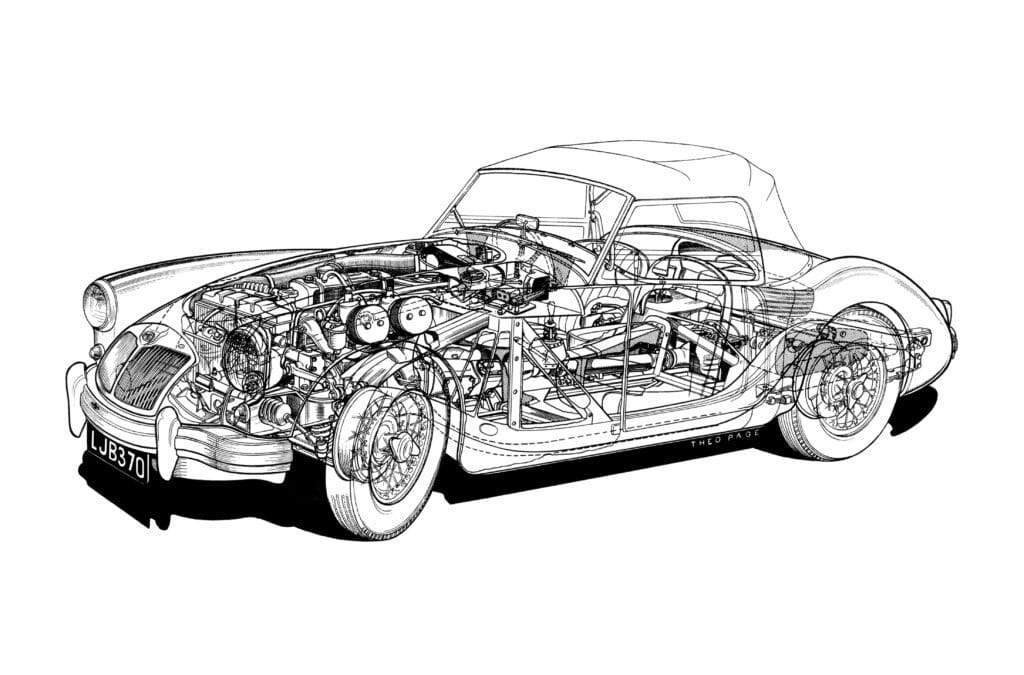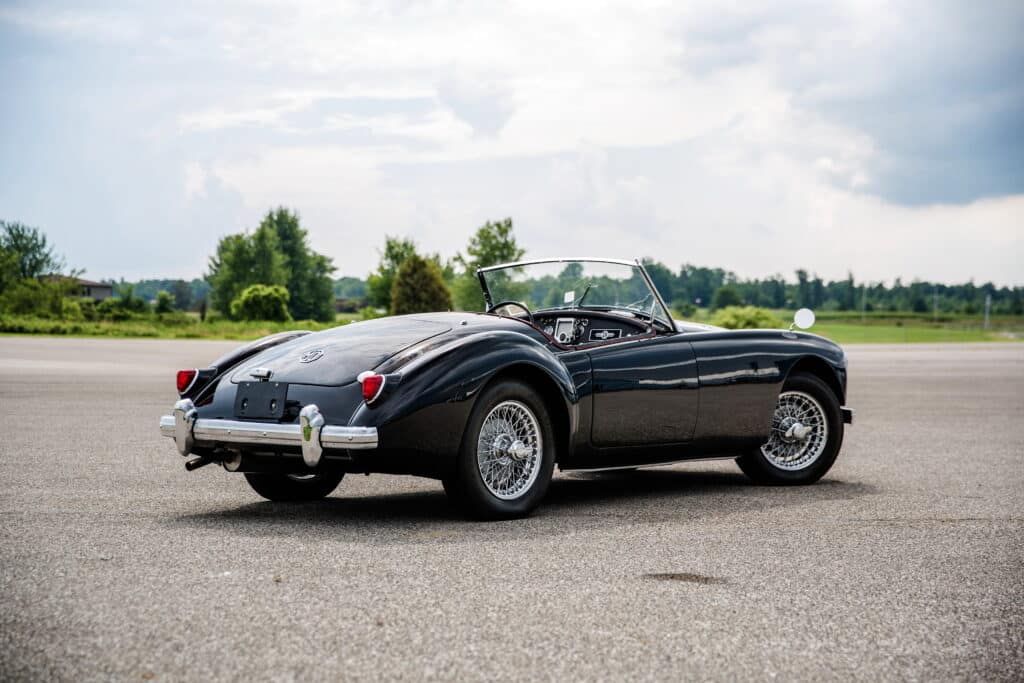The roadsters always captivated the attention of performance-minded enthusiasts with their combination of dynamic design, lively engines, and open-air driving. The British car industry almost singlehandedly dominated the genre, with numerous memorable machines emerging from the UK. In mid 20th century, if you wanted a sporty two-seater and your bank account could not withstand the prices of Italian exotics, chances are that the MG A was on top of your list. A bit overshadowed by the successor, MG B, the A is still an immensely influential machine and the first modern roadster with an incredible effect on the segment and motoring history.
Even though the small convertible with sporty pretensions was an automotive form known since the very beginning of the car industry, the British manufacturers perfected it just before the Second World War. The MG was one of the best-known names and companies that had two big open-top hits. The first was MG TC, introduced in 1936, and the second was the MG TD, presented in 1950, following the same design language, engineering, and dimensions. Car historians argue that MG would probably not survive the war if it wasn’t for the American serviceman who discovered the concept of an affordable sports car and imported thousands of those small but lively roadsters back home. All of a sudden, customers on the other side of the ocean had an attractive alternative to big and bulky sedans in the form of small British roadster, which was fun to drive, easy on the gas, and cheap to own. The popularity, as well as the influx of dollars, kept the MG profitable during the harsh post-war years. However, in the early ‘50s, the MG realized that it needed a fresh and new model and that the fun but visually outdated MG TD could not keep up with the times. So, the work started on a modern successor.

MG’s engineers knew that it wouldn’t be enough to re-bodied the old chassis with the new design and that customers wanted the all-new machine. But in those days, the R&D budget was pretty limited, so the company used a modified chassis and engine from the MG Magnette sedan, which proved to be rather a good basis for a sports car. Initially, the new car had a 1.5-liter, four-cylinder engine fed by two carburetors delivering 72 hp. The final piece of the puzzle was the design, and MG caused a stir when it introduced its new model since the design was very advanced, sleek, and modern for 1955 standards. Continuing with its alphabetic tradition, the new car was named MG A, with the “A” symbolizes the new beginning and new era for the company.

The MG A debuted in 1955 with a base price of just over $2100, making it very competitive in the American market, which is always immensely important for British brands. With solid performance and a top speed of just under 100 mph, the MG A was enthusiastically accepted by the sports car crowd and amateur racers. The 1.5-liter engine might sound diminutive, but it performed well due to its small overall weight of just 900 kg. The first MG As were roadsters, but in order to widen its appeal, MG offered a hard top as an option and a fully closed coupe.

Despite the fact that standard MG A fitted the bill just fine, there was a group of MG’s engineers who thought that the car had much more potential. Fortunately, those guys were given a chance, and very soon, MG introduced the “Twin Cam” version of the A. Presented in 1958, MG A Twin Cam was an enormous leap forward and a proper sports car with several revolutionary features. First of all, the twin-cam head for the engine which completely changed the character of the car and gave it a 108 hp rating. Second, the Twin Cam had disc brakes along with race-style wire wheels emphasizing the performance potential. With the improved and high-compression engine, Twin Cam could sprint to 60 mph in just over 9 seconds and top 115 mph, impressive results for the late 50s. Unfortunately, such advanced vehicles had their share of problems, mainly with the engine, which was prone to overheating. So, production was stopped after just over 2000 examples in 1960.

However, the sales of the standard MG A remained strong, and in late 1959, it was improved with a new engine and features. A 1.6-liter unit replaced the engine with 81 hp, which helped raise the performance a little. Drawing inspiration from the Twin Cam, the MG A 1600 received disc brakes on the front axle, while the rear drums were retained. Interestingly, after just a year, MG introduced the Mark II model, which was the final iteration of MG A. It had a slightly enlarged engine (1,622 ccm), 90 hp on tap, and several exterior changes like different tail lights. Those late models were more refined and noticeably faster than the early cars. The end came in late 1962 when the production of the MG A stopped after almost 100,000 cars were sold in all versions and specs. The majority of the cars made were roadsters, and most of them were exported, mainly to America.

With its massive sales figures (for the time), great looks, and driving dynamics, the MG A helped promote the roadster class and gave MG much-needed financial safety. However, it did something more, and that almost singlehandedly helped create the amateur racing scene, especially in America. MG knew that this model had potential in competition and financed a few notable attempts, the foremost being the 1955 Le Mans. But, when the cars reached the customers, a lot of people decided to use them in amateur series and modify them, turning them into vehicles that could punch well above their weight. That is why the MG A has a particular spot in the car industry, and it is one of the most important and influential British cars ever made.






